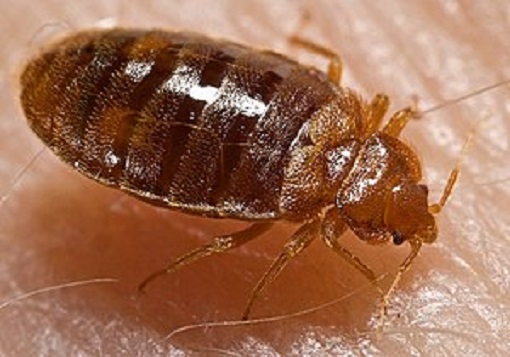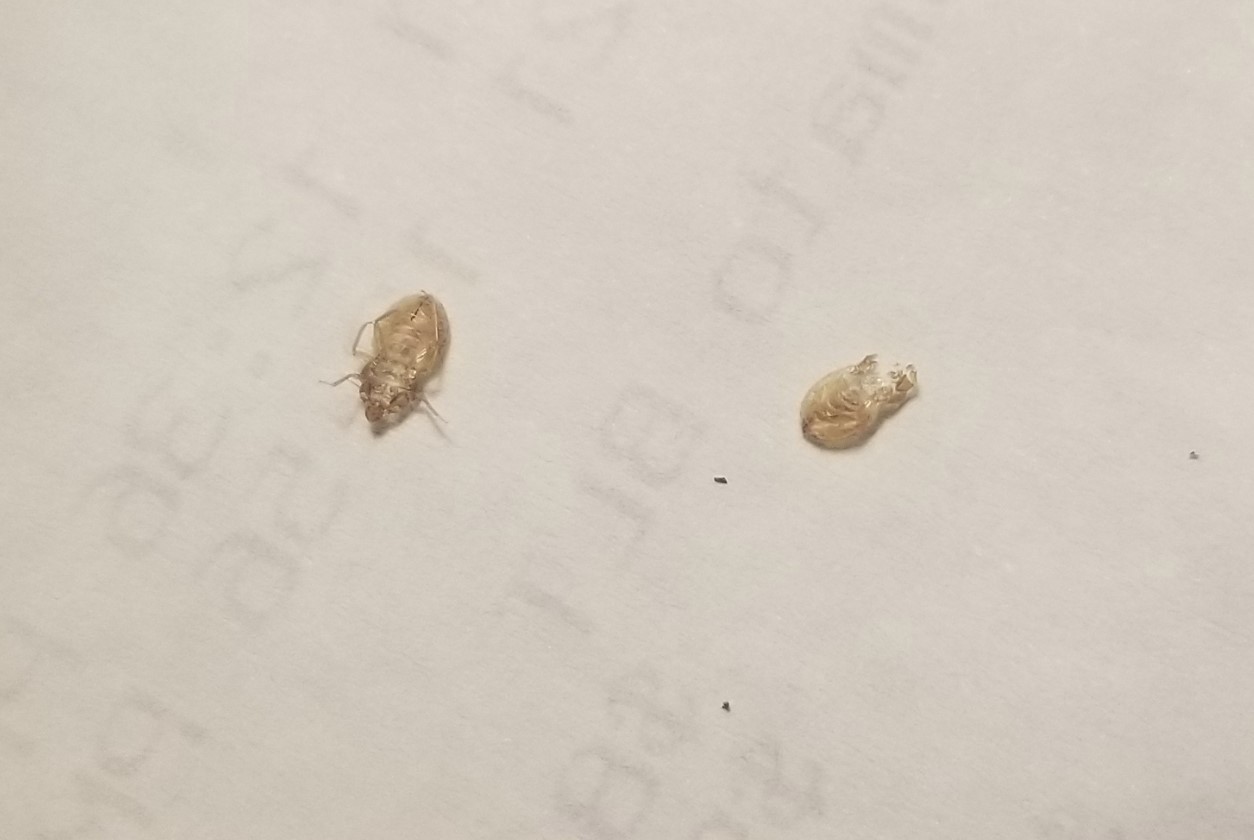Identification
Before treating or taking any other action in response to an infestation, it is critical to confirm it is bed bugs through identification. Treating for the wrong pest is a waste of time and resources and could even make your situation worse. There are several bugs that resemble some aspects of bed bugs such as book lice. I've been fooled by the abdomen of a ladybug before without the rest of its body attached.
The 4 Signs of Bed Bugs
The best way to confirm you have bed bugs is by identifying one or more of the following signs:
-
Live bugs
Finding a live bug is the most definitive proof that you have an infestation. Study the pictures below so you know what you're looking for. If it's got more than 6 legs or if it has 3 segments to its body, it's not a bed bug.
-
Cast Skins
Skins will look almost clear or yellowish and will be in the same shape as a bed bug. It's just a shell so it will be very light weight and easy to crush or blow away.
-
Eggs
Eggs are oval shaped and somewhat tubular. They will be white and almost translucent and often are compared to a grain of rice. If they have hatched, you'll see a hole in one end.
-
Fecal stains
Their feces (poop) is made up of digested blood so it leaves tiny black spots that look like an ink stain- Fresh feces stains may turn slightly reddish when wiped with a damp paper towel but won't easily wipe off.
- I have never used one but I've heard that there are some kits available to test for bed bug feces that are effective like the one below. I'd rather find one of the other 3 signs above than just base a confirmation on feces though and if they are there, you will find more evidence than just a few black spots. (Bed bug blue kit)
Bites
Bites on their own are not sufficient to confirm that you have an infestation. There are many other reasons for skin rashes and irritations that can look similar to bed bug bites such as carpet beetle irritation and allergies. Also, our reaction to bites can be very different depending on the person. Some have severe reactions and others don't react at all. If one person is getting bit but it seems another in the same bed never gets bites, it could be that they are in fact also getting bit but just don't react to them. The amount of time it takes for bites to manifest also varies per person. Some have a reaction within just a few hours whereas others may take over a day or two to show.
You will often read that bed bug bites come in 3's but as I've said before, don't think that is a hard rule that always holds true. There will usually be more than one bite though as they hunt around for the ideal spot. The bites don't follow a particular pattern but will usually be somewhat close to each other in a cluster as the bug walks around during its hunt. They don't often bite through clothing unless the material stretches enough to leave openings where they could reach their feeding tube through to your skin so you will often see bites along the edges of where the skin is exposed such as near a sleeve or pant leg or waist band. If your clothing is loose fitting, they could find a spot underneath it but they don't want to risk going deeply into that tunnel. Once they find a good spot for feeding, they will take their drinks and hurry back to safety.
Inspection Tips
Finding evidence to confirm you have a bed bug infestation requires knowing where to look and what to look for. Ideally, you should have a professional assess your home and they will know within minutes if they're there or not. However, it's important to know how to do an inspection yourself especially when you are traveling and staying at a rented property or hotel.
Useful tools for inspecting:- Flashlight
- White piece of paper, card, cardboard, or envelop
- Small flat head screwdriver
- Glasses or magnifying glass
- Ziplock bag
- Clear tape
- Start at the head of the bed. Bugs are most likely going to be closest to the end of the bed where your mouth is exhaling that wonderful carbon dioxide that attracts them.
- Look at the back of the headboard if it's detached from the wall or the cracks between the headboard and wall.
- Shine the flashlight in any joints, cracks, or gaps in the wood of the headboard or the decorative pieces glued onto the wood.
- Check the outside of the fitted sheet on the mattress towards the head of the bed looking for those tell tale ink spots and cast skins.
- Lift up the fitted sheet and using the screwdriver or if you have a firm white credit card or cardboard, run it along the seams of the mattress still near the head end of the bed
- Bed bugs prefer to hide on the box spring if the bed has one since it is more stable and less often disturbed than a mattress.
- Follow the seam of the box spring using the screwdriver or card and especially check under the plastic tabs on the corners of the box spring if it has them. They LOVE hiding behind those!
- If you do find a bug or skin or egg, use a piece of tape to pick it up and put it into a ziplock bag. The tape will keep it from being able to move if it's alive and is a great way to pick up skins without crushing them. And clear tape would allow you to see through it still.
- If you find a live bug, be sure to double bag it in zip lock bags just to be safe. Don't squash it! Some pest control companies require seeing a live bug to approve treatment.
- Check the skirting of the bedding if applicable since they love to hide in the seams of low lying fabric around the bed
- If you have been experiencing bites or find other definitive signs of bugs, I recommend completely disassembling the bed frame as many times, during an infestation, you will find additional activity in the cracks and joints and even screws of the frame
- Bugs are often not confined to the bedroom. Inspect all living room furniture where you spend time resting such as recliners and couches focusing on the skirting and arm rests and underside. Rooms that are less likely to contain bugs are bathrooms and kitchens